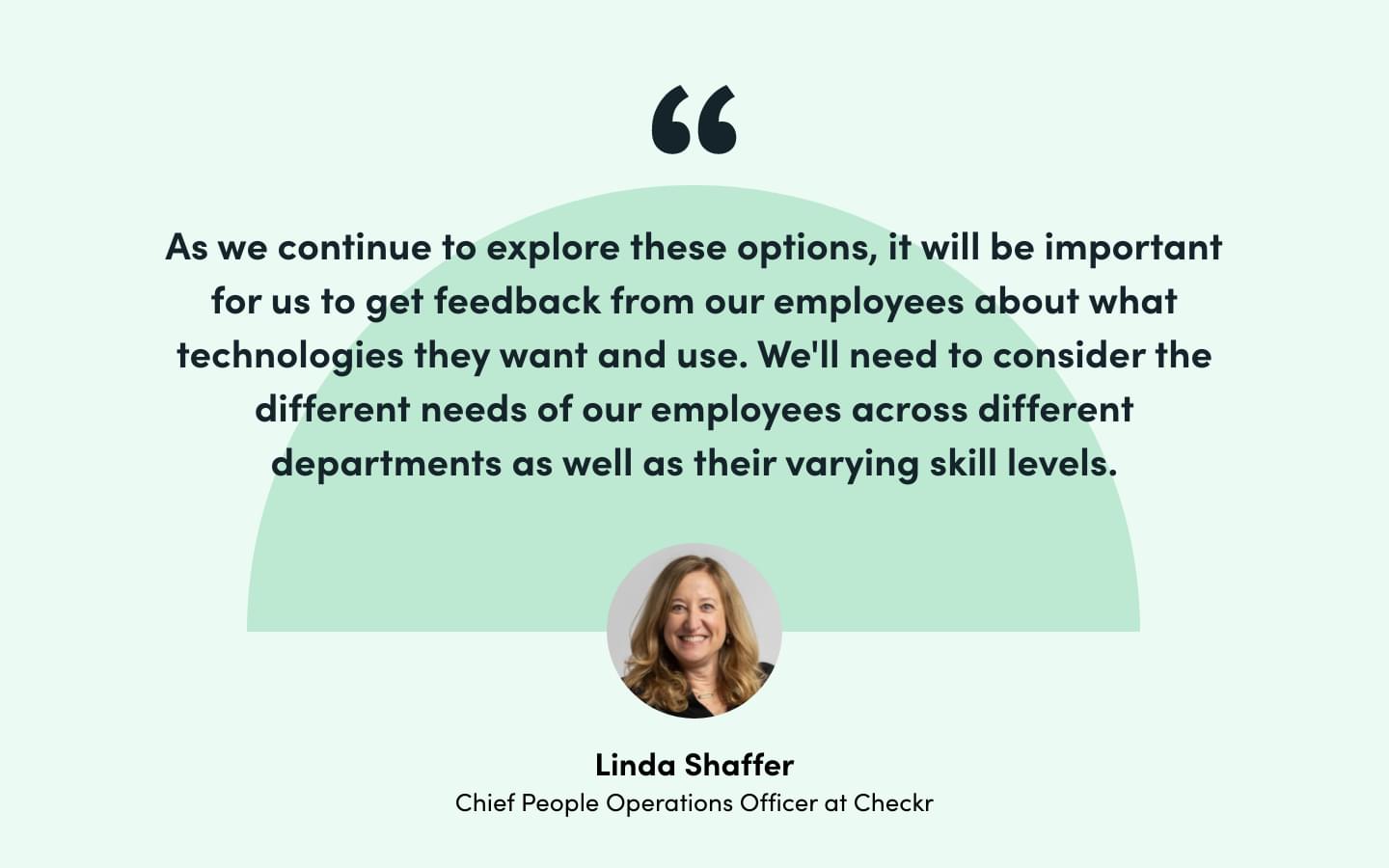As the world of work shifts, the tools and technologies we use to support that work must adapt. One area of technology that is rapidly changing is the software used to manage people processes and HR workflows. These tools, apps, and systems are often referred to as part of an organization’s people tech stack.
To help you build out technology systems that suit your organization, Terkel asked C-suite executives and business managers how they are updating their people tech stacks. What are business leaders looking for in HR software? How are people tech stacks changing and evolving with the move to hybrid and remote work? Can identifying baseline software requirements set your organization up for success?
Six leaders from various organizations answer these questions and much more below. Use the following recommendations to help you better manage and expand your people tech stack as your organization grows and evolves.
Scalability and Integration Are Key
“As the country head of a fast-growing organization; I also lead our HR efforts. As such, I am always thinking about how to best build out technology systems to suit our organization as we grow. There are a few key considerations I keep in mind when building out our people tech stack.
First, we need to make sure that our systems are scalable and can grow with us. We also need to ensure that our systems are integrated and can talk to each other seamlessly. And last, we need to make sure that our systems are user-friendly and easy to use for our employees.
With these considerations in mind, I am always on the lookout for the best technology solutions to help us manage our growing organization.”
Lorien Strydom, Executive Country Manager, Financer.com
Incorporate Team Feedback Into Tech Stack Decision Making
“It is important for us to consider a variety of tools when thinking about our people tech stack since different approaches will be needed to support different work. Some areas we are currently exploring include talent management software, performance management tools, recruitment and onboarding systems, training platforms, and collaboration tools.
As we continue to explore these options, it will be important for us to get feedback from our employees about what technologies they want and use. We'll need to consider the different needs of our employees across different departments as well as their varying skill levels.
For example, some of our developers might prefer a more streamlined approach to collaboration and may be less likely to use heavier toolsets, like videoconferencing software. Meanwhile, our customer support representatives might need more robust features in order to effectively do their jobs.”
Linda Shaffer, Chief People Operations Officer, Checkr

Cultivate “Informational Osmosis” in a Remote Workforce
“One of the key challenges we face having transitioned to a remote workforce is finding a tech solution to replace the simple 'watercooler' interactions that formed part of our in-office experience. Such interactions play an important role in team cohesion and also allow information to disperse organically throughout the team.
Whilst there are certainly some fantastic tools to facilitate structured meetings in a remote workforce, there remains something less tangible that is lost when a workforce no longer comes together to work.
In an office environment, there is a certain amount of 'informational osmosis'; members of the team are exposed to aspects of the business that, although not directly relevant to their role, nevertheless provide a rich and valuable context for how their work fits into the wider organization.
Remote working brings a risk of the workforce becoming siloed, and this is a challenge that our people tech stack must adapt to overcome.”
John White, Director, We Run

Focus On Usable Data
“We are assessing our ATS and HR systems, so we have mapped out a list of requirements we need and one of the most important factors is usable data.
So often we have tools that generate and populate reports that look great, but we can't actually do much with them. We need HR Software that gathers data we can use to analyze efforts, make real-time decisions with, and use in-line with hiring trends and hiring decisions.”
Bobby Blaney, Talent Acquisition Specialist, CTI Digital
Consider adding these HR-focused articles to your reading list:
No-Code in HR: 10 Ways HR Teams Are Using No-Code Tools
Top 5 Practical Ways to Use Formstack in Human Resources
3 Ways to Make Your HR Team More Productive
Use Strategic Point Solutions and Interoperability
“So many companies are struggling under the weight of system fatigue. We have so many tools that all serve very narrow functions and this leads to many frustrations: higher software costs, more confusion from employees, siloed data, etc.
Our guiding lights for building a tech stack are:
1.) In general, fewer systems are better than more systems. If we can find a system that can knock out two, three, or four birds with one stone—that's great.
2.) However, there will be times that point solutions are necessary—either because of unique business demands or very specific functional requirements—and that's okay.
3.) But, we need to make sure that our systems can integrate with each other as frequently as possible so that we can limit data silos and manual re-entry.”
Brett Ungashick, CEO and CHRO, OutSail

Take Advantage of AI-Driven Automation
“We have been shifting our people tech stack towards AI-driven automation and mobile-first solutions to make it more intelligent, engaging, and scalable.
We are building an AI-enabled core that will help us better identify and meet the needs of our employees. We are also working on automating repetitive tasks and making our systems more mobile-friendly. We believe that these investments will help us drive higher engagement and productivity for our employees.
We are always evaluating new technologies and how they can be integrated into our products and services. Our goal is to provide the best possible experience for our employees, and we believe that AI-driven automation and mobile technologies will help us achieve this goal.”
Karolina Kijowska, Head of People, PhotoAiD
How Do You Think About Your People Tech Stack?
Would you like to submit an alternative answer to the question, "How do you think about your people tech stack?" Submit your answer here, and your insights will be considered for inclusion in this article.
Looking for HR software that can quickly automate onboarding, performance reviews, and other HR workflows? Look no further than Formstack, your all-in-one HR process automation tool.
About the Author

Terkel was founded by Brett Farmiloe to provide a voice to uncelebrated small businesses. Terkel was officially launched on October 4, 2020. Today, Terkel places thousands of panelist insights into articles for brands through daily questions posed on terkel.io. Anyone can sign up for free and answer questions that are relevant to their experiences to get published and build expertise online.











